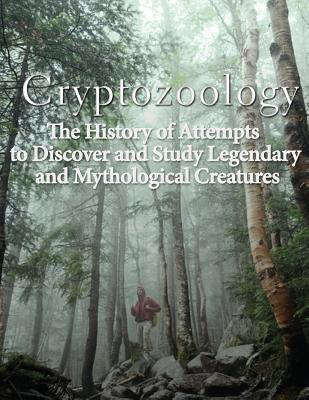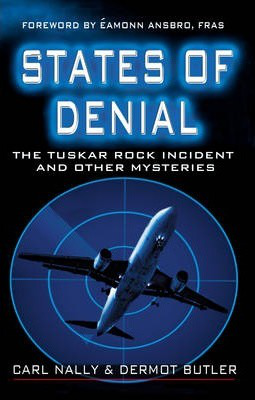Chris Langan - A Genius’s Vision of Life, Death, and Beyond
General News
Saturday 21st, December 2024
4 minute read.
Chris Langan, a 72 year old American horse rancher, has proposed a revolutionary perspective on what happens after we die. Langan, widely regarded as one of the most intelligent people in history, is believed to have an IQ between 190 and 210, significantly higher than Albert Einstein’s estimated IQ of 160. His hypothesis, known as the Cognitive-Theoretic Model of the Universe (CTMU), offers a complex explanation for the relationship between consciousness and reality.
Langan’s theory suggests that death is not the end of existence. Instead, he believes consciousness, or the “soul”, transitions into another form of being within what he describes as the “computational structure of reality”. According to Langan, this transition takes place in a dimension or plane of existence that is inaccessible to us while alive.
During a May appearance on the Theories of Everything podcast with Curt Jaimungal, Langan explained, “Death is the termination of your relationship with your particular physical body that you have at this present time. When you are retracted from this reality, you go back up toward the origin of reality. You can be provided with a substitute body, another kind of terminal body that allows you to keep on existing”.
Langan’s theory rejects traditional views of heaven and hell as overly simplistic. Instead, he envisions a transition to an entirely new state of being. While the specifics of this dimension remain unclear, he believes it is fundamentally different from anything we can conceptualise in our current physical reality.
According to Langan, memories from one’s current lifetime are preserved within the mathematical structure of the universe, though they may not necessarily be accessed after death. “Your memories can always be pulled back out, but there’s no reason to do that usually, OK? Why cling to memories of a world in which you are no longer instantiated?” he said.
One of the more intriguing aspects of Langan’s hypothesis is his assertion that all reincarnations or lifetimes occur simultaneously. He refers to this phenomenon as “meta-simultaneity” within the “non-terminal domain” of reality.
“Arguably, all of your lifetimes, if you were to be reincarnated again and again and again, all of those reincarnations are meta-simultaneous. There is a sense in which they all occur at once in the non-terminal domain”, Langan explained.
Langan also described a meditative state that occurs immediately after death, during which one’s consciousness observes the changes taking place. “Now you’re basically meditating, seeing everything change. However, you exist that way right now”, he added.
This transitional phase, however, is distinct from the ultimate afterlife. Langan posits that the afterlife involves a profound shift in the essence of being, moving the soul beyond physical or mental selfhood into a realm far beyond human comprehension.
At the core of Langan’s CTMU is the idea that reality itself is structured as a form of information, akin to language. He suggests that this aligns with the concept of a self-simulating universe, where all existence is rooted in informational constructs.
His theory is built on three main principles:
Langan’s perspective on God deviates from traditional religious imagery. Instead, he identifies God as the ultimate embodiment of the properties of existence itself, rather than as a deity situated in the heavens.
Langan’s CTMU represents an ambitious and highly abstract attempt to explain the mysteries of life, death, and reality. While it remains largely theoretical and untested, it offers a compelling alternative to conventional views on the afterlife. The theory’s complexity, however, means that it raises as many questions as it seeks to answer.
Whether his ideas gain widespread acceptance or remain a niche philosophical exploration, Langan’s work challenges us to think deeply about the nature of consciousness and existence. For those pondering life’s ultimate questions, the CTMU provides a thought provoking lens through which to explore the unknown.
Langan’s theory suggests that death is not the end of existence. Instead, he believes consciousness, or the “soul”, transitions into another form of being within what he describes as the “computational structure of reality”. According to Langan, this transition takes place in a dimension or plane of existence that is inaccessible to us while alive.
During a May appearance on the Theories of Everything podcast with Curt Jaimungal, Langan explained, “Death is the termination of your relationship with your particular physical body that you have at this present time. When you are retracted from this reality, you go back up toward the origin of reality. You can be provided with a substitute body, another kind of terminal body that allows you to keep on existing”.
Langan’s theory rejects traditional views of heaven and hell as overly simplistic. Instead, he envisions a transition to an entirely new state of being. While the specifics of this dimension remain unclear, he believes it is fundamentally different from anything we can conceptualise in our current physical reality.
According to Langan, memories from one’s current lifetime are preserved within the mathematical structure of the universe, though they may not necessarily be accessed after death. “Your memories can always be pulled back out, but there’s no reason to do that usually, OK? Why cling to memories of a world in which you are no longer instantiated?” he said.
One of the more intriguing aspects of Langan’s hypothesis is his assertion that all reincarnations or lifetimes occur simultaneously. He refers to this phenomenon as “meta-simultaneity” within the “non-terminal domain” of reality.
“Arguably, all of your lifetimes, if you were to be reincarnated again and again and again, all of those reincarnations are meta-simultaneous. There is a sense in which they all occur at once in the non-terminal domain”, Langan explained.
Langan also described a meditative state that occurs immediately after death, during which one’s consciousness observes the changes taking place. “Now you’re basically meditating, seeing everything change. However, you exist that way right now”, he added.
This transitional phase, however, is distinct from the ultimate afterlife. Langan posits that the afterlife involves a profound shift in the essence of being, moving the soul beyond physical or mental selfhood into a realm far beyond human comprehension.
At the core of Langan’s CTMU is the idea that reality itself is structured as a form of information, akin to language. He suggests that this aligns with the concept of a self-simulating universe, where all existence is rooted in informational constructs.
His theory is built on three main principles:
- Reality as Information: Reality is fundamentally made up of informational constructs, organised like a language.
- Transtemporal Reality: Events from one timeline can influence those in other timelines, reflecting a fluid and interconnected nature of existence.
- Panconsciousness: Reality contains a universal consciousness, emerging from the simulator or creator itself.
Langan’s perspective on God deviates from traditional religious imagery. Instead, he identifies God as the ultimate embodiment of the properties of existence itself, rather than as a deity situated in the heavens.
Langan’s CTMU represents an ambitious and highly abstract attempt to explain the mysteries of life, death, and reality. While it remains largely theoretical and untested, it offers a compelling alternative to conventional views on the afterlife. The theory’s complexity, however, means that it raises as many questions as it seeks to answer.
Whether his ideas gain widespread acceptance or remain a niche philosophical exploration, Langan’s work challenges us to think deeply about the nature of consciousness and existence. For those pondering life’s ultimate questions, the CTMU provides a thought provoking lens through which to explore the unknown.



